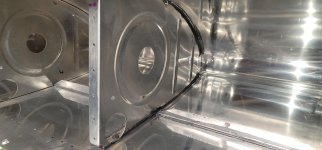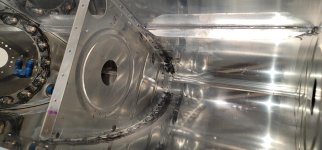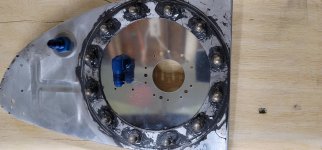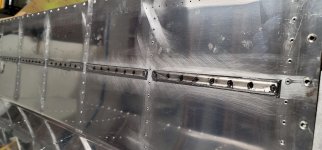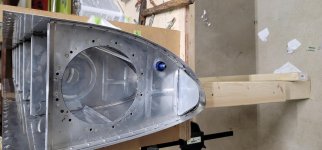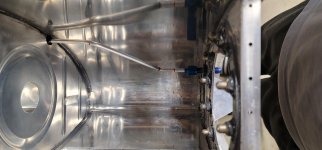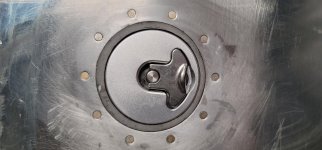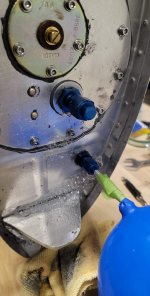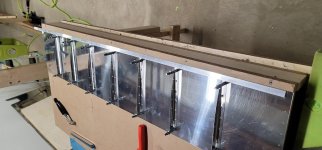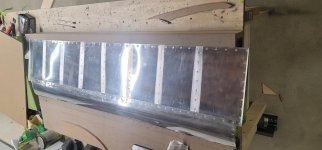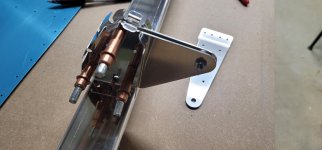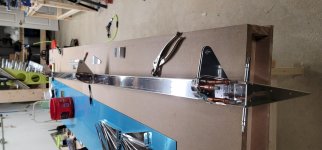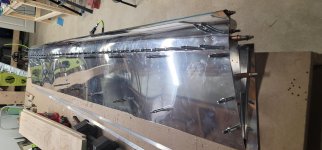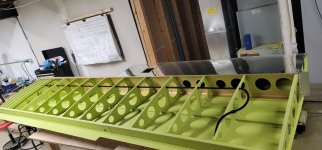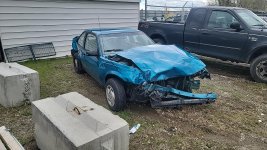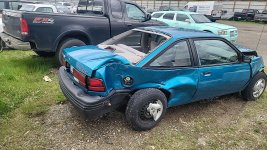Van's Air Force
You are using an out of date browser. It may not display this or other websites correctly.
You should upgrade or use an alternative browser.
You should upgrade or use an alternative browser.
My RV9A
- Thread starter Jslow2
- Start date
PilotjohnS
Well Known Member
Never enough
Seems like you can never have enough proseal.
Lastly, I was going to add a second fuel level sender in the outer rib. I got talked out of it, but I wish I had. A second sender will allow accurate fuel level through the whole range from Full to empty, if using a G3X or other computer fuel gauge.
Fuel tank work.
Seems like you can never have enough proseal.
Lastly, I was going to add a second fuel level sender in the outer rib. I got talked out of it, but I wish I had. A second sender will allow accurate fuel level through the whole range from Full to empty, if using a G3X or other computer fuel gauge.
wcalvert
Well Known Member
Wow, that's more than a few bubbles! and this is on pressure from a balloon? Can you locate the source as the bolt heads or seal around the sender plate or multiples locations? It's hard to tell from the photo.
Your test photo shows a couple of concerning places: The bolt heads are not bedded in sealant, the seam between the end bulkhead and tank skin doesn't show any sealant squeeze out, the edge of the sender plate has gaps without squeeze out.
I looked back at some of your previous photos to see if there are any obvious glaring issues. Question: what type of fastener is on the fuel side of the sender plate bolts? They look to be standing proud of the pro seal and not capped off by the sealant. Maybe it's a new kind of fastener, but that arrangement doesn't look familiar.
Any way you slice it, you'll need to do some serious sleuthing and figure out the source of that leak. Hopefully it becomes clear soon.
Cheers
Your test photo shows a couple of concerning places: The bolt heads are not bedded in sealant, the seam between the end bulkhead and tank skin doesn't show any sealant squeeze out, the edge of the sender plate has gaps without squeeze out.
I looked back at some of your previous photos to see if there are any obvious glaring issues. Question: what type of fastener is on the fuel side of the sender plate bolts? They look to be standing proud of the pro seal and not capped off by the sealant. Maybe it's a new kind of fastener, but that arrangement doesn't look familiar.
Any way you slice it, you'll need to do some serious sleuthing and figure out the source of that leak. Hopefully it becomes clear soon.
Cheers
Your test photo shows a couple of concerning places: The bolt heads are not bedded in sealant, the seam between the end bulkhead and tank skin doesn't show any sealant squeeze out, the edge of the sender plate has gaps without squeeze out.
Cheers
As Scott McDaniels points out in his excellent video on building RV wing tanks, the goal is to seal off the tank from the INSIDE: https://youtu.be/gTl827JWz68?t=479 . The moral of the story is, SEAL FROM THE INSIDE OUT. Twirl every shop rivet head and fillet every inside seam. Scuff every sealant surface. Think as though you are fuel trying to find a way outside the tank. Then think you are inside the tank trying to block that pathway. Think about redundant fuel pathway blockages.
Last edited:



